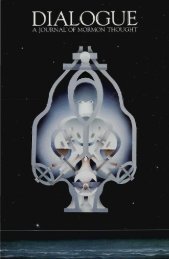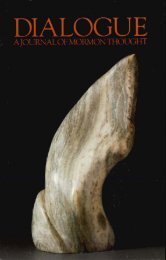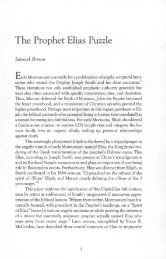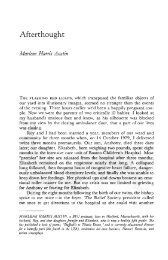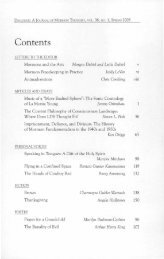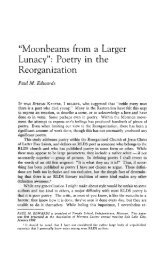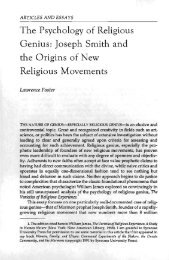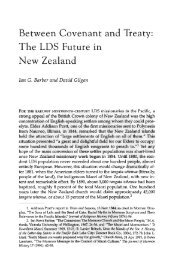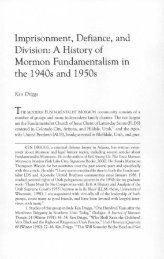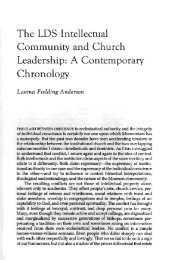Dialogue, Volume 25, Number 2 - Dialogue – A Journal of Mormon ...
Dialogue, Volume 25, Number 2 - Dialogue – A Journal of Mormon ...
Dialogue, Volume 25, Number 2 - Dialogue – A Journal of Mormon ...
You also want an ePaper? Increase the reach of your titles
YUMPU automatically turns print PDFs into web optimized ePapers that Google loves.
64 DIALOGUE: A JOURNAL OF MORMON THOUGHT<br />
crime, and coercions by General Authorities to hide or neglect an<br />
incriminating fact. But I am more interested in exploring examples <strong>of</strong><br />
<strong>Mormon</strong> women — particularly those <strong>of</strong> us who consider ourselves liberated<br />
from overt male control —who recognize and attempt to satisfy<br />
our desire to assert autonomy and then unconsciously excise the means,<br />
thereby thwarting our own purposes.<br />
Although <strong>Mormon</strong> women sometimes exhibit signs <strong>of</strong> physical and<br />
sexual abuse, genital mutilation is not culturally mandated or acceptable.<br />
The clitoris's presence does represent possibility. Metaphorically,<br />
we women on the Ouelessebougou expedition realized many <strong>of</strong> these<br />
possibilities. First, we were in Africa. Thus, we had the freedom to<br />
travel beyond our domestic environment. Except for the board<br />
chairman's wife, who came primarily to accompany her husband, each<br />
<strong>of</strong> us knew that we were able to be there because we had economic<br />
means derived from an education and the ability to use skills to earn<br />
and manage an income. Granted, our group was not typical; again<br />
with the exception <strong>of</strong> the chairman's wife, we others were all single<br />
and over thirty years old; only two <strong>of</strong> us had children. Had we been<br />
married, most <strong>of</strong> us likely would not have been on that expedition. We<br />
seemed free from the sexual hegemony that marks the Bambara women<br />
both psychically and physically. Yet we are only slowly admitting<br />
that <strong>Mormon</strong> sociological patterns for both sexes may be psychically<br />
suffocating and ultimately destructive. Witness documented depression<br />
among housewives, fear among homosexuals, and attempts to<br />
suppress symposia and honest speaking from people who believe that<br />
the glory <strong>of</strong> God is intelligence. Furthermore, sexual hegemony exists<br />
no less in the <strong>Mormon</strong> culture than in the Bambara. Regardless <strong>of</strong><br />
secular leadership possibilities open to women, authorities in the LDS<br />
Church feel more compelled now than ever before to control Church<br />
structure, capital, ritual, and administration. And LDS women feel<br />
compelled, no matter how "liberated" we may regard ourselves, to<br />
allow men that privilege.<br />
Frustrated by the sexual discrimination she observed in early<br />
twentieth-century America, anthropologist Elsie Clewes Parsons noted<br />
that "women cooperate in their own subjection ... by trying 'hard<br />
to live down to what is expected <strong>of</strong> them' " (in Rosenberg 1982, 172).<br />
Philosopher Antonio Gramsci observed that hegemony works from<br />
both directions: a group dominates only with permission from subgroups.<br />
Subordinate groups, be they racial, ethnic, religious, economic,<br />
or gendered, may resist suppression with language and action, but<br />
until they actually revolt (and risk becoming tyrannical themselves),<br />
they primarily acquiesce to or support the ruling order (Lears 1985,<br />
568-78).



